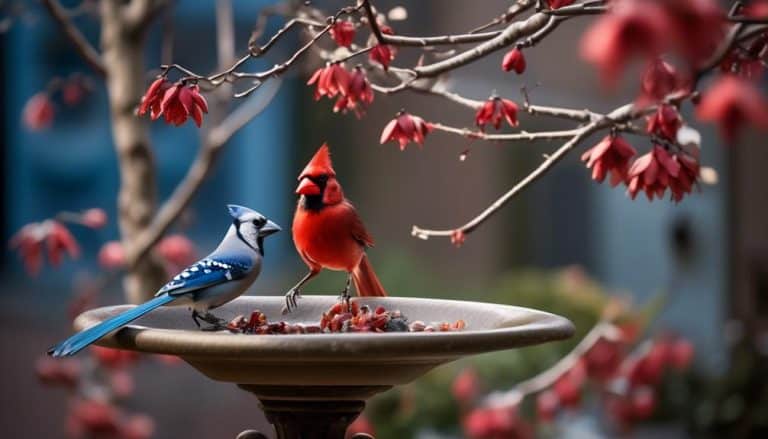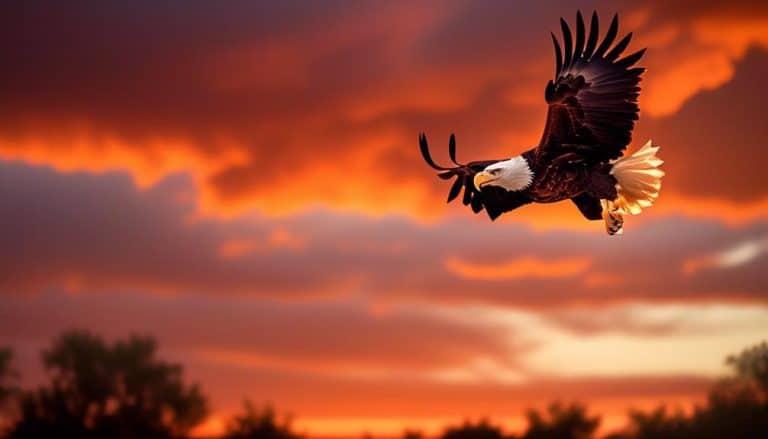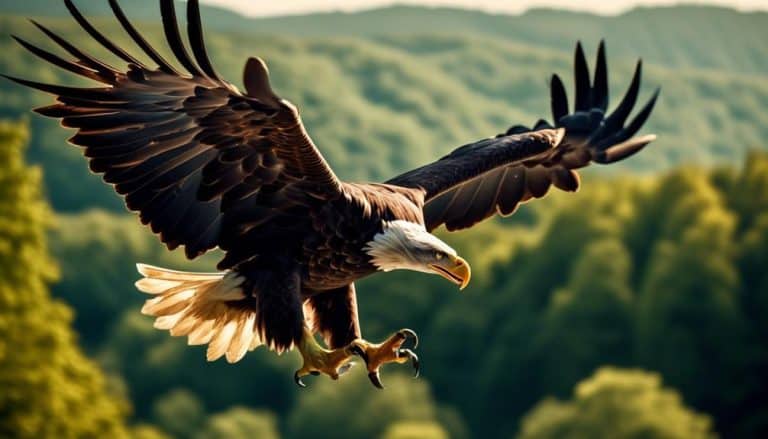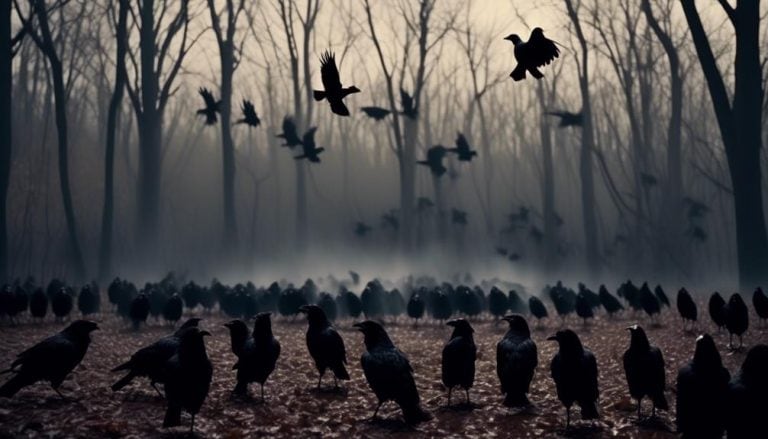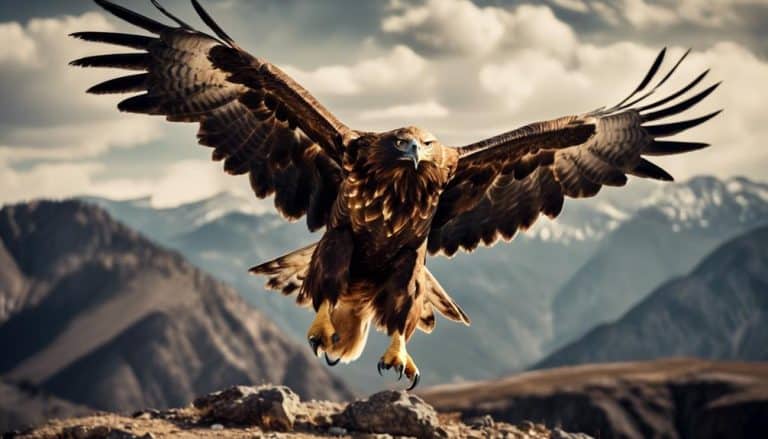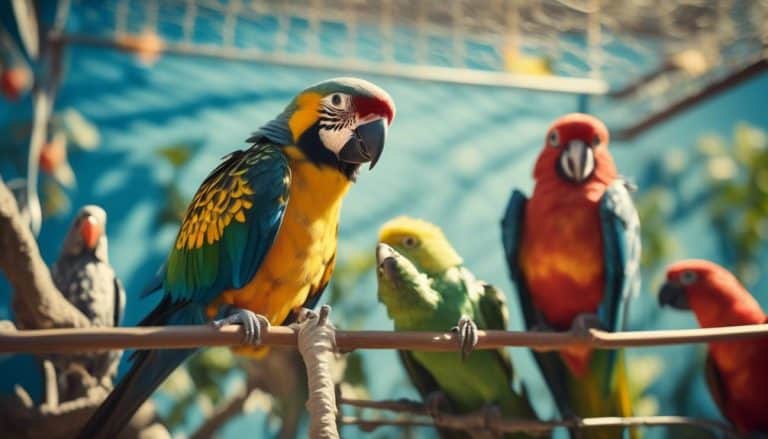As the saying goes, 'birds of a feather flock together.' And in the vast state of Texas, there is no shortage of feathered friends to observe and appreciate.
Today, I want to talk about a particular group of avian creatures that have caught my attention – the yellow-bellied birds that call Texas their home. With their vibrant plumage and intriguing behaviors, these birds have captivated birdwatchers and nature enthusiasts alike.
But what makes them so special, you might ask? Well, let's just say that there is more to these yellow-bellied birds than meets the eye.
Different Species of Yellow-Bellied Birds
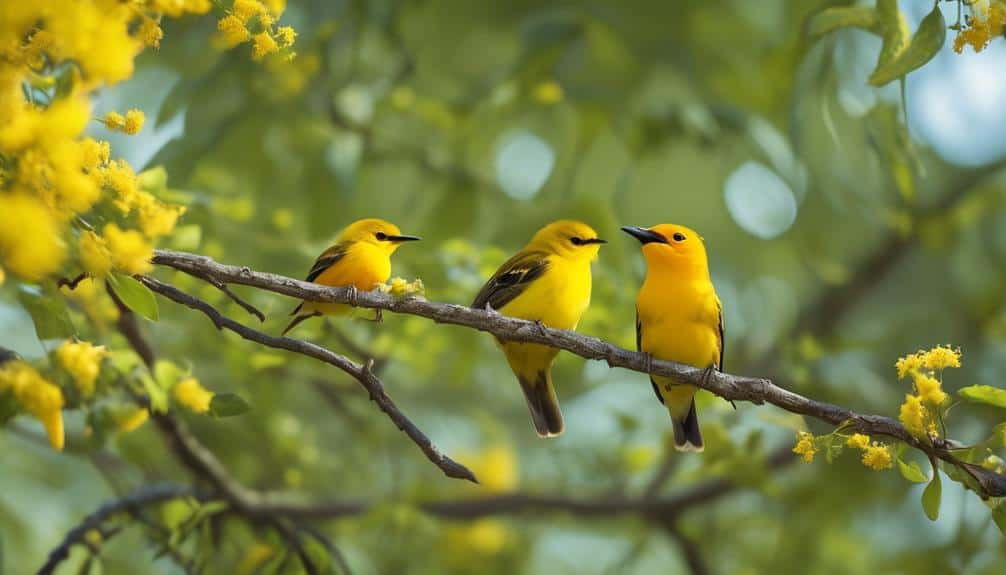
In my observations of yellow-bellied birds in Texas, I've identified a diverse array of different species that exhibit striking variations in their physical characteristics and habits.
One prominent species found in Texas is the Yellow Warbler (Setophaga petechia). These small, vibrant birds are known for their bright yellow plumage and distinctive black streaks on their chests. They're often found near water sources, such as rivers and marshes, where they build their nests. Yellow Warblers are migratory birds, traveling long distances to breed in North America during the summer and then migrating south to Central and South America for the winter.
Another species of yellow-bellied bird commonly found in Texas is the Wilson's Warbler (Cardellina pusilla). These birds have a distinct black cap on their heads, contrasting with their bright yellow underparts. Wilson's Warblers are known for their energetic and lively behavior, constantly flitting through the bushes in search of insects. They also undertake long migrations, breeding in the northern parts of North America and wintering in the southern regions.
Conservation efforts for yellow-bellied birds in Texas focus on preserving their habitats and protecting critical stopover sites during migration. By conserving these areas, we can ensure that these beautiful birds continue to thrive and grace our skies with their vibrant colors.
Habitat and Range of Yellow-Bellied Birds in Texas
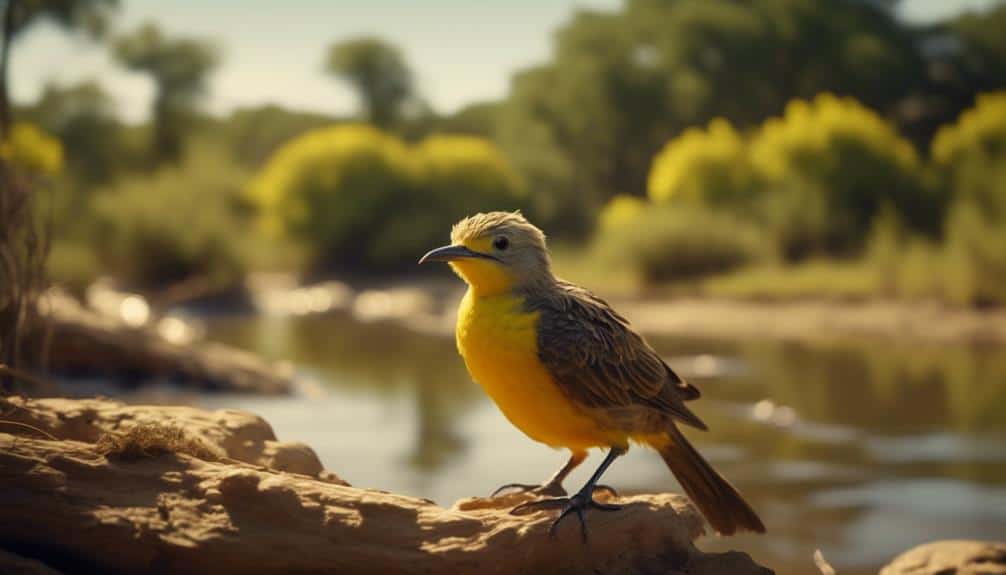
Yellow-bellied birds in Texas can be found in a variety of habitats across the state, showcasing their adaptability and ability to thrive in diverse environments. These habitats include forests, woodlands, grasslands, and wetlands. The yellow-bellied sapsucker, for example, is often found in deciduous forests and woodlands, where it creates characteristic rows of small holes on tree trunks to feed on sap and insects. On the other hand, the yellow-bellied flycatcher prefers open woodlands and shrubby areas, where it hunts for flying insects from perches. The yellow-bellied warbler, known for its distinctive song, can be found in a range of habitats, including coniferous forests, mixed woodlands, and even swamps.
Ecologically, yellow-bellied birds play an important role in their habitats. They help control insect populations, particularly during the breeding season when they feed insects to their young. Additionally, their foraging activities, such as pecking at tree bark or probing in the ground, can indirectly benefit other species by uncovering hidden food sources.
Conservation efforts for yellow-bellied bird populations in Texas focus on protecting and restoring their habitats. This includes preserving forests, woodlands, and wetlands, as well as implementing sustainable land management practices. By ensuring the availability of suitable habitats, we can help maintain healthy populations of these birds and preserve the ecological balance they contribute to.
| Species | Preferred Habitat |
|---|---|
| Yellow-bellied sapsucker | Deciduous forests and woodlands |
| Yellow-bellied flycatcher | Open woodlands and shrubby areas |
| Yellow-bellied warbler | Coniferous forests, mixed woodlands, and swamps |
Behaviors and Mating Habits of Yellow-Bellied Birds
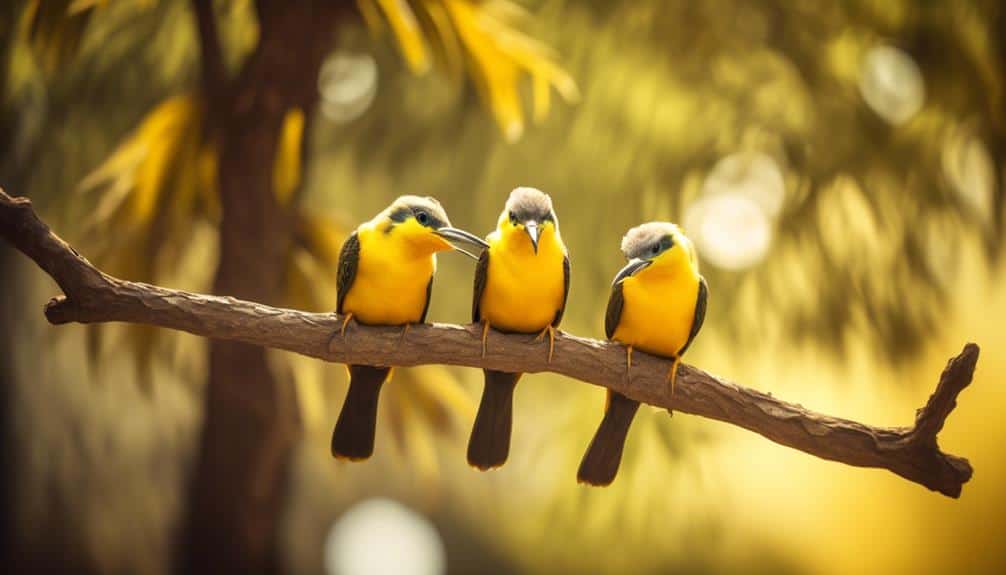
Having examined the habitat and range of yellow-bellied birds in Texas, it's now crucial to explore their intriguing behaviors and intricate mating habits. These birds exhibit fascinating courtship displays that are both visually stunning and behaviorally complex. Here are five key aspects of their behavior and mating habits:
- Elaborate courtship displays: Yellow-bellied birds engage in elaborate courtship displays to attract their mates. These displays often involve intricate flight patterns, vocalizations, and displays of colorful plumage. They're a visual spectacle to behold.
- Singing competitions: During the mating season, male yellow-bellied birds engage in singing competitions to establish their dominance and attract females. Their melodious songs echo through the Texas forests, creating a symphony of sounds.
- Nest building techniques: Yellow-bellied birds are meticulous nest builders. They carefully select their nesting sites and construct their nests using a variety of materials such as twigs, leaves, and feathers. These nests are intricately woven and provide a safe haven for their young.
- Monogamous partnerships: Once a pair of yellow-bellied birds has formed a bond, they engage in a monogamous relationship. They remain together throughout the breeding season and often return to the same nesting site year after year.
- Cooperative parenting: Yellow-bellied birds exhibit cooperative parenting, with both parents taking an active role in raising their offspring. They share the responsibilities of incubating the eggs, feeding the hatchlings, and protecting the nest from predators.
Observing the behaviors and mating habits of yellow-bellied birds in Texas provides valuable insights into their evolutionary adaptations and enhances our understanding of the natural world.
Migration Patterns and Seasonal Movements
During their migration, yellow-bellied birds in Texas exhibit distinct patterns of movement and behavior that are influenced by seasonal changes in resources and environmental conditions. These patterns are essential for their survival and reproduction. As the climate changes, these patterns may be disrupted, impacting the populations of yellow-bellied birds in Texas.
Bird conservation efforts in Texas play a crucial role in protecting and preserving the habitats that these birds rely on during their migration. By providing suitable habitats and implementing conservation measures, such as creating protected areas and restoring degraded habitats, we can ensure that these birds have access to the resources they need to complete their journeys.
Climate change poses a significant threat to yellow-bellied bird populations in Texas. Rising temperatures and unpredictable weather patterns can affect the availability of food and water along their migration routes. Changes in vegetation phenology and the timing of insect emergence can also disrupt the synchronization between the birds' arrival and the availability of their food sources.
To address these challenges, it's essential to continue monitoring and studying the migration patterns and seasonal movements of yellow-bellied birds in Texas. By understanding how they respond to environmental changes, we can develop effective conservation strategies to mitigate the impacts of climate change and ensure the long-term survival of these remarkable birds.
Top Birdwatching Locations for Yellow-Bellied Birds in Texas
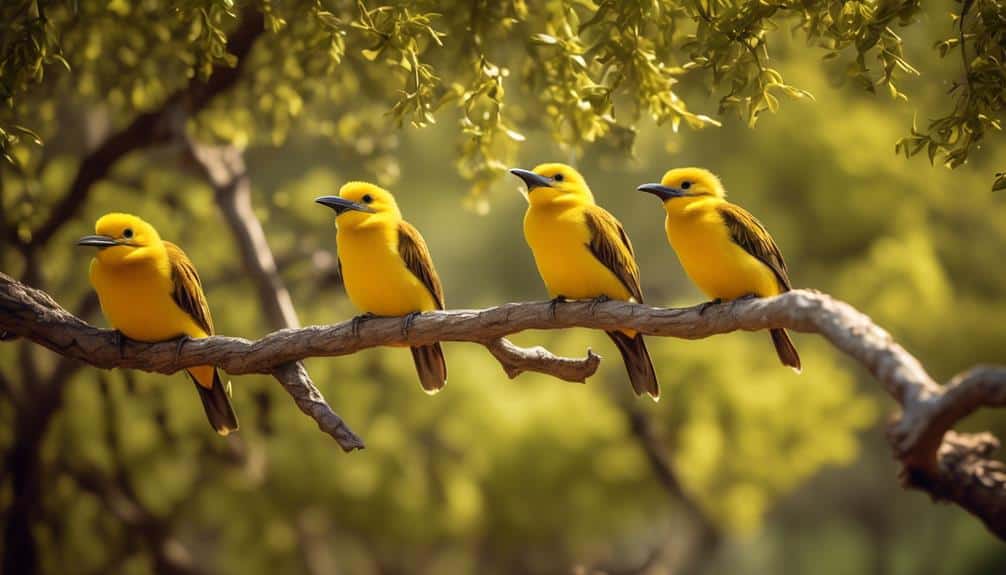
As I observe the migration patterns and seasonal movements of yellow-bellied birds in Texas, I'm fascinated by the diverse range of top birdwatching locations where these remarkable birds can be spotted. Texas is a haven for birdwatchers, offering a variety of habitats and ecosystems that attract a wide range of bird species.
Here are some of the top birdwatching locations in Texas to catch a glimpse of the beautiful yellow-bellied birds:
- Big Bend National Park: With its vast expanses of desert, mountains, and canyons, Big Bend National Park is a prime location to spot yellow-bellied birds. Make sure to bring binoculars and a field guide to help identify different species.
- Brazos Bend State Park: This park, located just outside of Houston, is known for its diverse bird population. Pack your birdwatching gear and explore the park's trails and wetlands to spot yellow-bellied birds in their natural habitat.
- High Island: Situated on the Gulf Coast, High Island is a hotspot for birdwatching during spring migration. The area's wooded areas and marshes provide ample opportunities to observe yellow-bellied birds in action.
- Davis Mountains State Park: Nestled in the scenic Davis Mountains, this state park offers stunning views and a chance to spot yellow-bellied birds. Don't forget to pack your camera and birdwatching equipment to capture the beauty of these birds.
- Santa Ana National Wildlife Refuge: Located in the Rio Grande Valley, Santa Ana is a birdwatcher's paradise. The refuge is home to a wide range of bird species, including yellow-bellied birds. Join a guided tour or explore the trails on your own to maximize your chances of spotting these beautiful creatures.
Conservation efforts play a crucial role in protecting yellow-bellied bird populations in Texas. Organizations like the Texas Parks and Wildlife Department and the National Audubon Society work tirelessly to preserve the habitats of these birds and raise awareness about the importance of conservation. By supporting these initiatives and practicing responsible birdwatching, we can ensure the continued presence of yellow-bellied birds in Texas for future generations to enjoy.
Remember to respect the birds' natural habitats and use birdwatching equipment and gear that minimizes disturbance to their environment.
Frequently Asked Questions
What Are Some Common Predators of Yellow-Bellied Birds in Texas?
I've observed that predator-prey dynamics play a crucial role in the survival of yellow-bellied birds in Texas. Predators have a significant impact on their population, and understanding these interactions is essential for conservation efforts.
How Do Yellow-Bellied Birds Communicate With Each Other?
Yellow-bellied birds communicate with each other through a variety of behaviors. They use vocalizations, such as chirping and singing, to convey messages. They also engage in visual displays, like fluffing their feathers or wagging their tails, to communicate.
Do Yellow-Bellied Birds Migrate to Other States or Countries During the Winter?
During the winter, yellow-bellied birds migrate to other states or countries. For example, some may fly south to Mexico or Central America. Their migration patterns are driven by the need to find suitable winter habitats with abundant food and favorable weather conditions.
What Is the Average Lifespan of Yellow-Bellied Birds in Texas?
The average lifespan of yellow-bellied birds in Texas is influenced by various factors, including breeding habits. Understanding these factors is crucial for studying their population dynamics and long-term survival in the region.
Are Yellow-Bellied Birds Territorial and Do They Defend Their Nesting Areas?
Yes, yellow-bellied birds are territorial and they do defend their nesting areas. They display aggressive behavior towards intruders and will defend their territory fiercely to protect their nests and young.
Conclusion
In conclusion, the yellow-bellied birds of Texas are a fascinating group of avian species. Their diverse habitats and range allow for a variety of behaviors and mating habits to be observed. From their migration patterns to their seasonal movements, these birds never fail to captivate birdwatchers.
If you find yourself in Texas, make sure to visit the top birdwatching locations and witness the breathtaking sight of these yellow-bellied beauties in action. As the saying goes, 'Seeing them in flight is like witnessing a burst of sunlight in the sky.'

